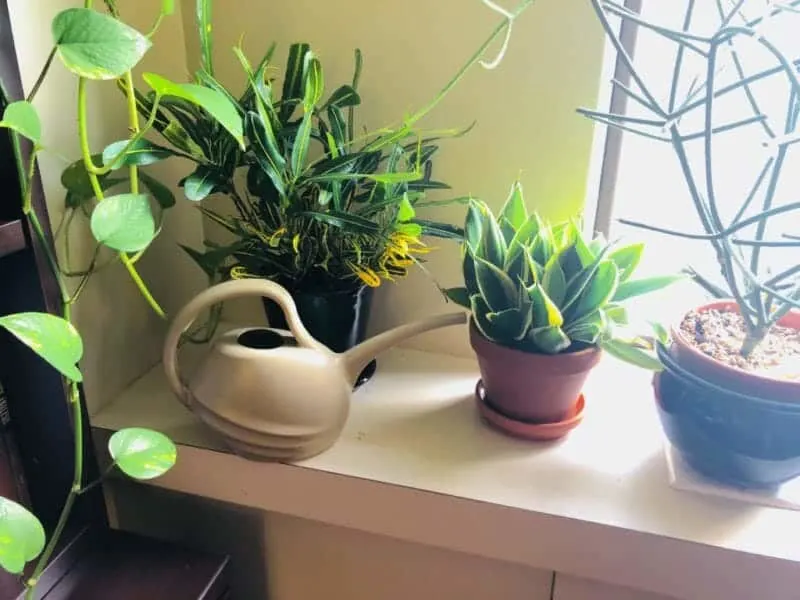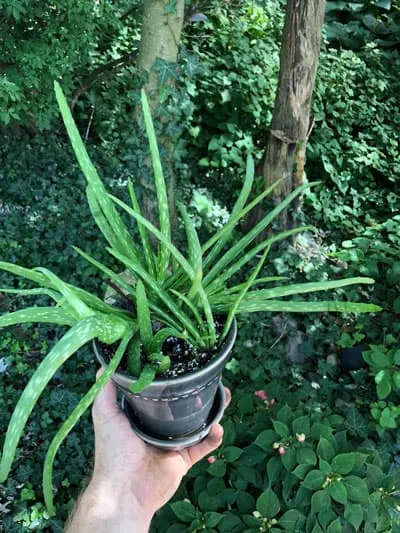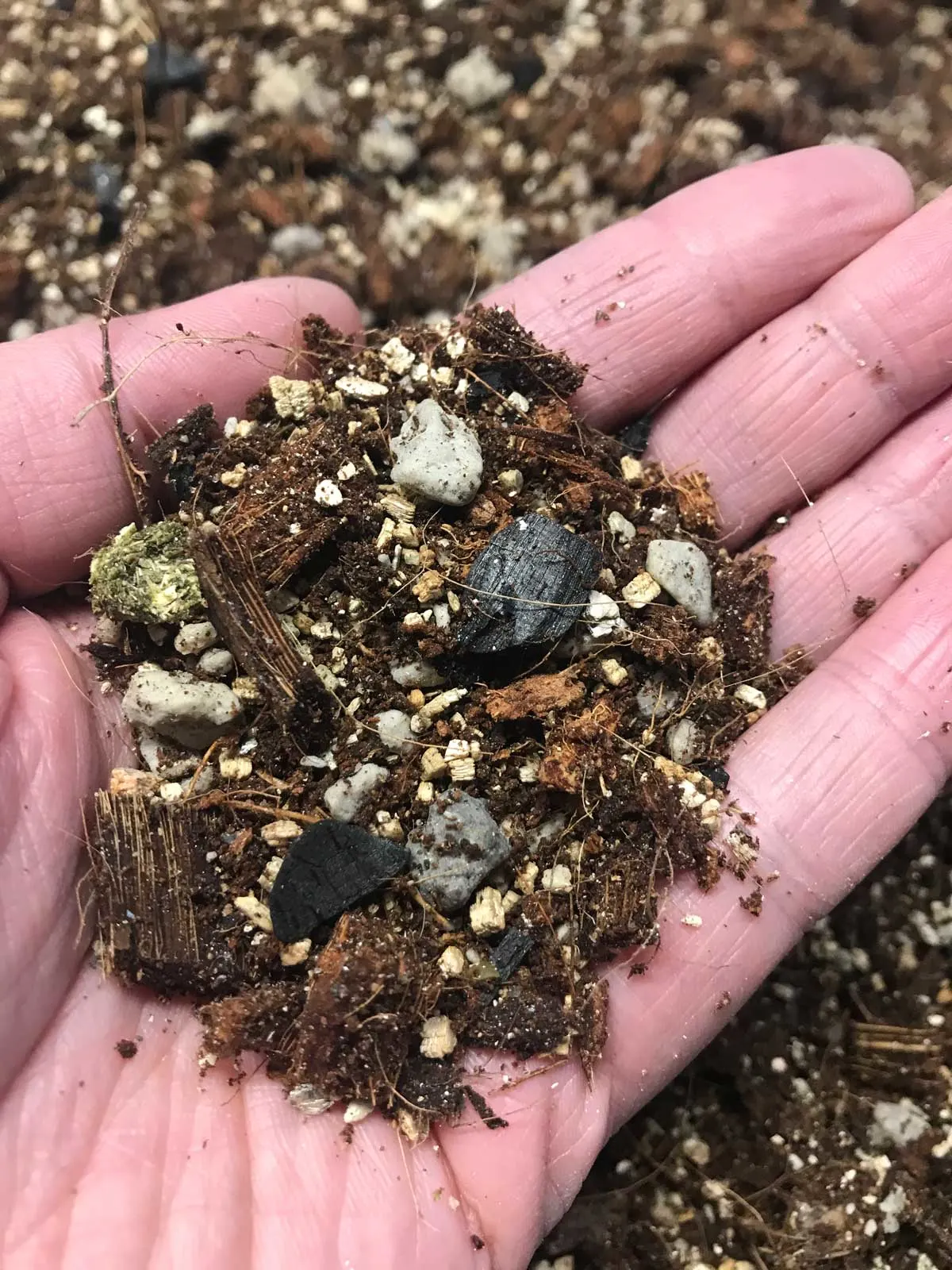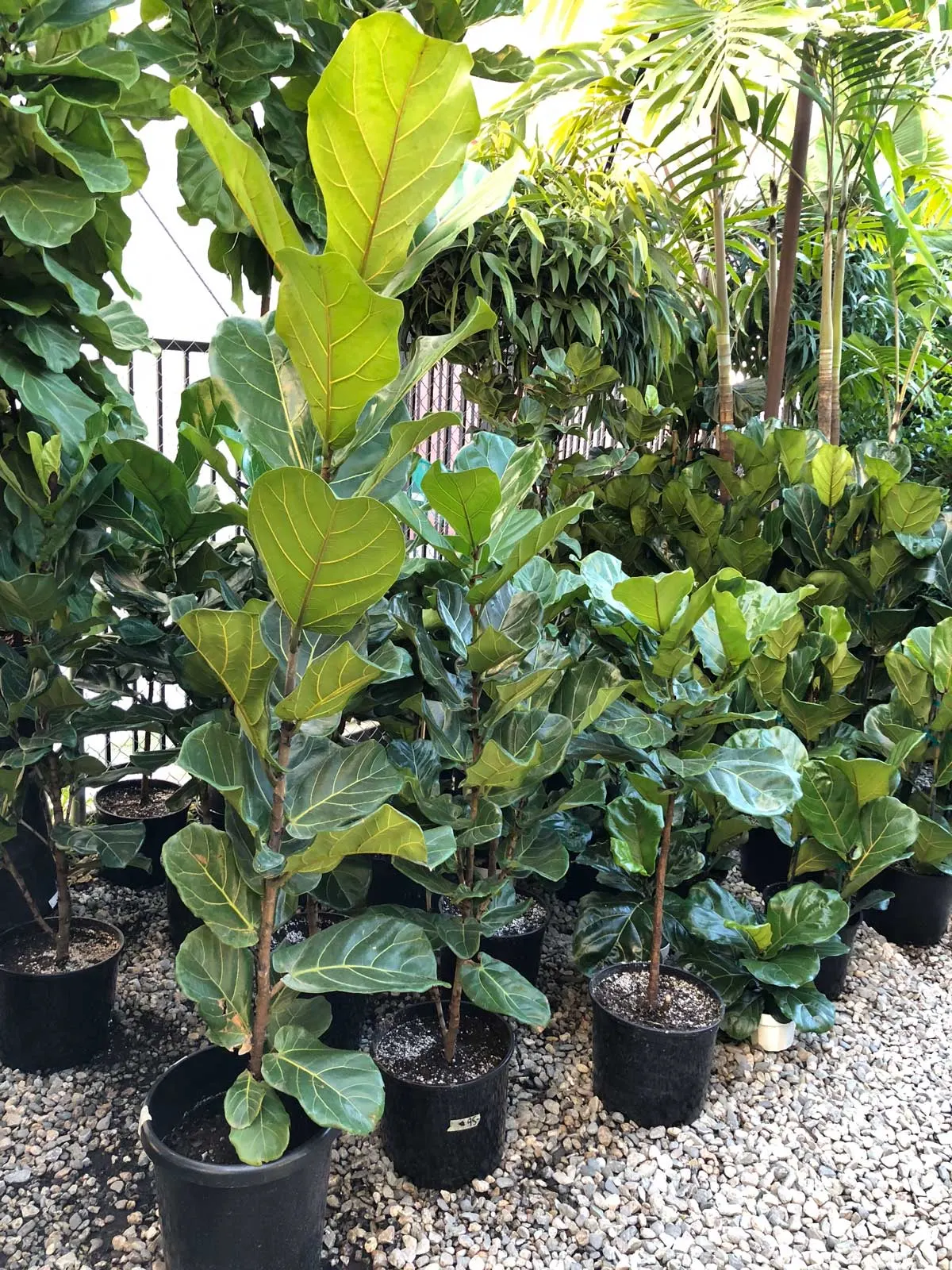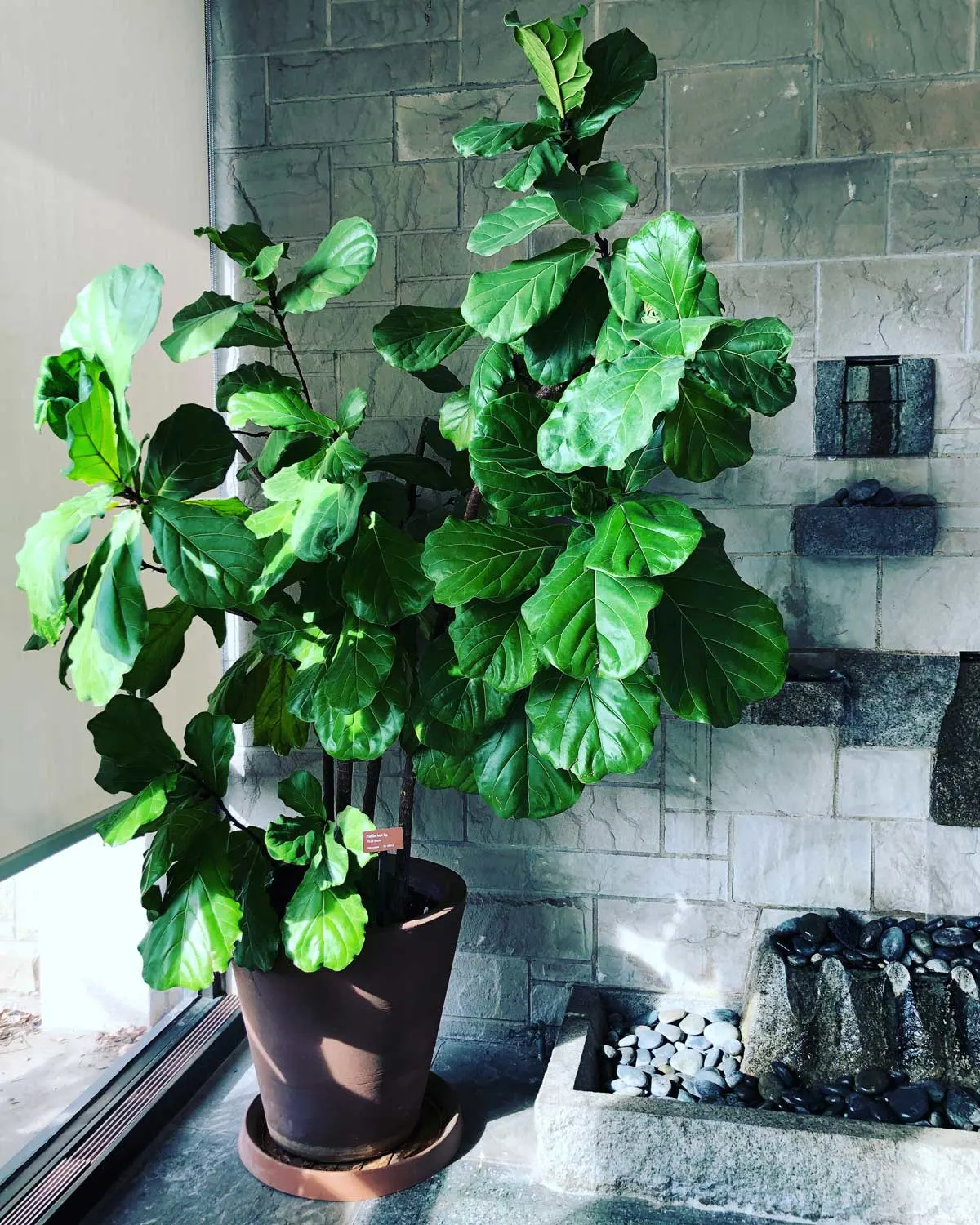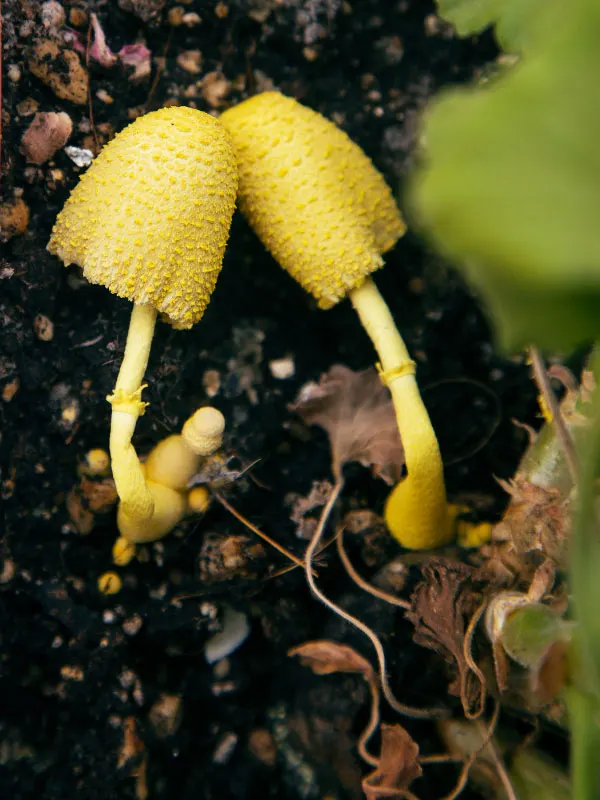Some of the links in this post may be affiliate links.
Should I change my plant’s soil? This is a question that sparks a lot of debate in online plant groups and on social media. There are several schools of thought. Some people think that plants are potted in “bad” soils and must be changed right away if the plant has any chance of surviving.
Others think that it’s best to wait a month or two before repotting to allow the plant to acclimate to your home. And yet others think that potting soil is potting soil and it doesn’t matter. So what is the right answer? None of the above? All of the above? Keep reading to find out!
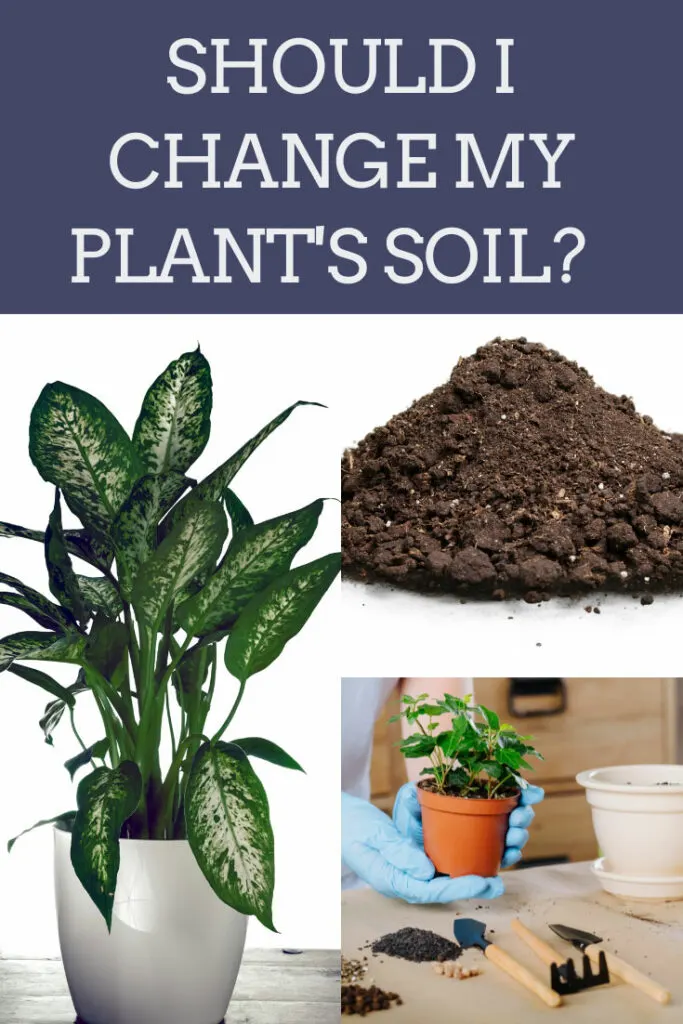
This is a special, collaborative post that my colleague Veronica from Oh Happy Plants worked on, and I’ve also provided my input. In order to keep it simple, my input will be in italics, while Veronica’s will be in plain text.
This post will also be part of a longer series of posts where we discuss specific potting mixes. Now let’s get back to the original question…
Table of Contents
SHOULD I CHANGE MY PLANT’S SOIL?
First, let’s talk light
Think about the growing conditions in your home: probably low to medium-bright light. I think about light in terms of commercial growing conditions: bright indirect is considered about 2,000 to 5,000 foot-candles. This is what plants get while grown under a shade cloth in California.
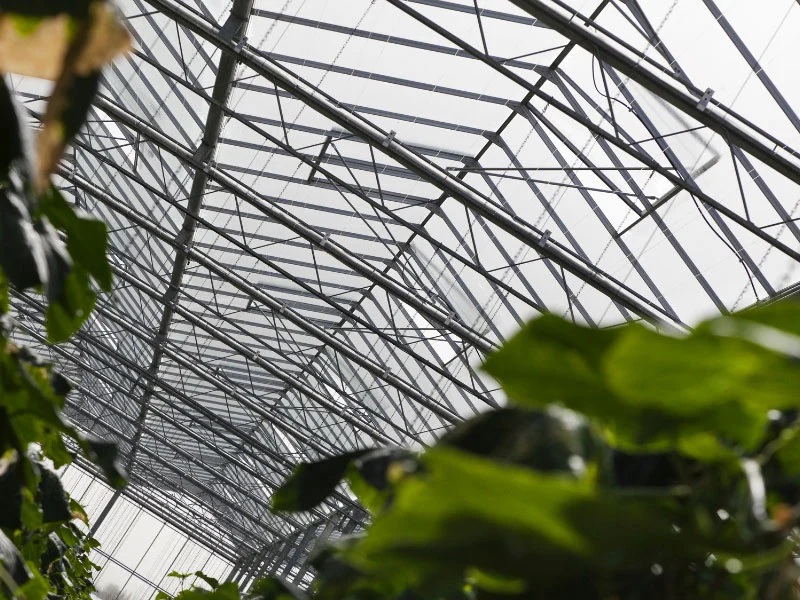
Direct light through my east-facing window in the summer is about 3,500 foot-candles, so by nursery standards that would be considered “bright indirect,” even though our eyes see direct sun falling on leaves.
If you don’t have a light meter in your hand, you’re probably over-estimating the light available to your plants.
Let me add a little more detail on measuring light that is very revealing. Remember that light intensity varies drastically depending on time of day, how cloudy or sunny it is, season of the year, as well as distance from a window indoors, among other factors.
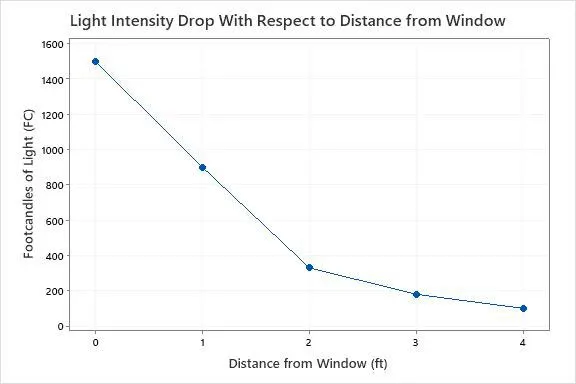
The graph above shows a snapshot in time showing how quickly light decays the further you get from a window. Look how dramatically light decayed from about 1500 FC right at the window indoors (0 feet) to less than 400 FC when you move JUST 2 FEET FROM THE WINDOW!
Does this make you rethink how far you place your plants from a window?
Nursery soils are designed for nursery use
We now know that nurseries have GREAT light. Because plants use water when they photosynthesize, great light means a plant is using more water.
We also know that plants lose water through respiration, so increased airflow will dry a plant out. The fans in a greenhouse or the breeze in outdoor growing fields provides that airflow.
Because of these two factors, nursery plants will drink much more water than the plants in your home.
These nurseries may be watering daily, or may be using a 100% coco coir growing medium that holds a ton of water. This is great for these plants because they use the water in a short period of time.
If you bring that plant home you’re putting it in lower light with much less airflow than it is used to, which means it will decrease its water consumption.
Ultimately, nursery soils are great when used in nurseries. In the home they can be problematic, which is why we recommend houseplant-specific potting mixes.
When should you change your soil?
Most answers you’ll find online will either advise you to change your soil right away or wait 1-2 months for your plant to ‘acclimate.’
Again, neither of these opinions is fully correct because neither addresses the reasoning behind the answer. Typically, when someone makes a statement like this, they don’t even have a reason, other than “it’s what I do and my plants are happy.”
We want you to understand the why so you can make informed choices, so here are some considerations.
Root fragility – does your plant take a while to recover from re-potting and re-grow its root hairs?
If so, that means it isn’t getting much water during recovery, so you may see a fired leaf or two (SEE THIS VIDEO FOR INFO ON LEAF FIRING or check out the podcast episode on leaf firing).
If this is a plant that takes a while to recover from re-potting, you may want to wait a bit to re-pot. The reason?
Plant metabolism slowdown.
When a plant is in a nursery it’s used to amazing light, plenty of nutrients and water, and is growing very quickly.
When moved to your home, typically growth will slow down – but this doesn’t happen right away! This metabolic slowdown can take anywhere from 2 to 6 months, and will be marked by a gradual slowing of water consumption.
I noticed this all the time when putting new plants into accounts at my old job, especially with Aglaonema plants. They’re relatively fast growers and use a LOT of water at the nursery, so a brand-new Aglaonema would drink at least twice as much as an older one in the same conditions.
Many times I’d put a new Aglaonema right next to one that was 2-3 years old, and the new one would consistently drink more for at least six months.
The takeaway here: if your plant is in crazy growth mode and also takes a while to recover from re-potting, it won’t be able to get the water to support the growth it wants to do right now.
Waiting a few months for it to slow its growth down is a good idea – then recovery from re-potting will have less of an impact on the plant. You can also take advantage of the nursery soil’s water retention capacity and not make yourself crazy with watering this plant all the damn time.
Another reason to wait: you need to get to know your plant!
If you’re new to houseplants, or even just new to this variety of plant, it’s a good idea to establish a baseline before you make any tweaks.
There are even differences between plants in a single species, so if you’re familiar with begonias but buy a variety that’s new to you, take a few weeks to get to know it.
You may notice that it’s very similar to your other begonias, or you may notice that it drinks much more or much less water. This is great information because it can help inform your soil choice as well as your choice of pot.
BUT WHAT IF I DON’T WANT TO WAIT TO RE-POT?
That’s fine! Maybe you brought home a plant with a massive fungus gnat infestation and you don’t want them swimming in your morning coffee.
Maybe you can tell the plant has had it rough for a few weeks during transport: days of darkness, a garden center employee who “overwatered“, etc.
Maybe you just want to re-pot and get it over with! While it’s totally fine to re-pot right away, here are a few things to keep in mind.
1. Don’t be surprised if your plant ‘fires’ a few leaves.
Leaf firing is what your plant does when it needs a drink. If it can’t get enough water from its roots it will use the water from its lowest/oldest leaf as a kind of ‘water bottle.’
For example, I recently neglected my hanging Pothos vines. The potting mix went bone dry, and this resulted in the lower leaves “firing” and turning yellow, as illustrated in the photo below.
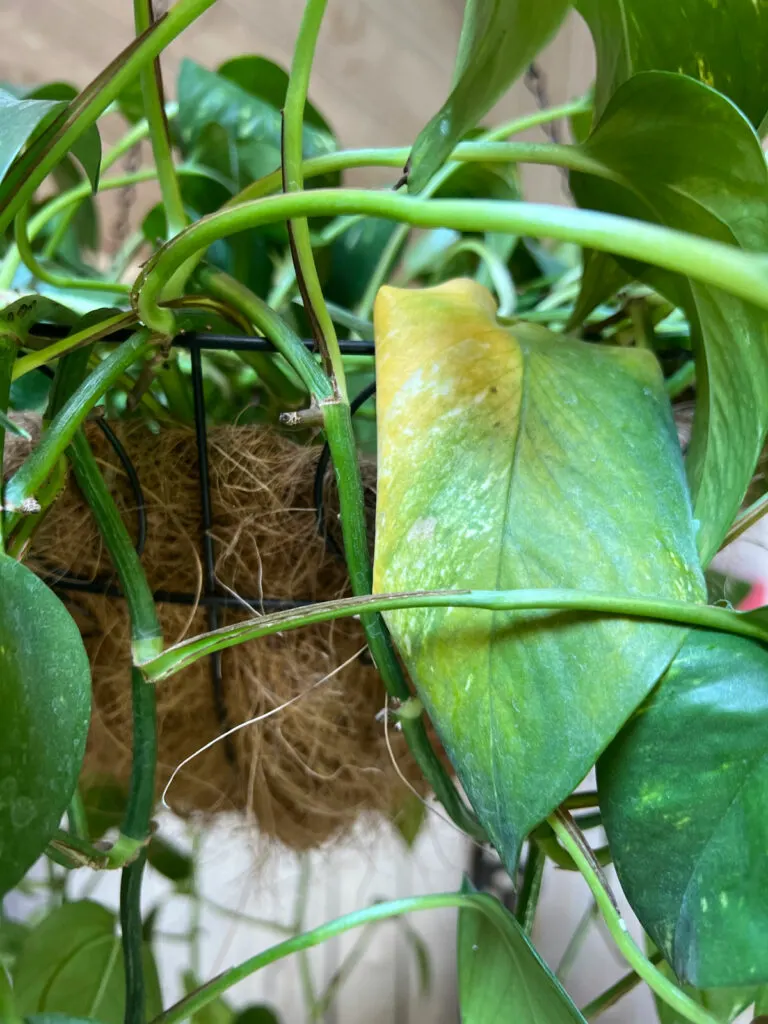
Make sure to leave this leaf attached until it is completely dry and crispy!
Your plant may take several leaves at once, or just one at a time, but if you pull them off when they’re yellow (i.e. still contain water that your plant is trying to use), you just took your plant’s ‘water bottle’ away and it has to kill another leaf to get more water.
Pro tip: you’ll know your plant has established its root system after re-potting when it stops firing leaves!
2. DO remove all of the old soil to avoid creating a perched water table.
Be sure to read this section completely, as this is not necessary in many cases, but it can be very helpful in specific cases!
If you re-pot a plant from a nursery soil that retains a lot of water to an airy, well-draining mix, remove as much of the old soil as possible.
For example, if your plant is in a very water-retentive mix, and you repot into something that is equal parts potting mix, orchid bark and perlite, this applies!
My favorite method to avoid root damage is to swish the root ball around in a bucket of water to allow old soil to float away. I’ll tickle the roots with my fingers gently if it’s really stuck.
Doing this will avoid a perched water table effect. If you leave a root ball made of super absorbent soil intact and place it into a well-draining mix, when you water it, the existing root ball will absorb water to capacity.
Check out Veronica’s perched water table podcast episode for more info.
And it holds that super-wet soil right around the roots and crown of the plant. This increases your chance of rot. To avoid this, simply remove the old soil when you’re changing soil textures.
An easy rule of thumb is to remove old soil if you’re moving from a super heavy, dense, wet mix to an airier mix.
If you’re trying to increase water retention with a re-pot, it’s okay to leave an airy mix in the root ball and just pot it into a denser mix – that won’t create issues. And it’s certainly great to repot into the same texture of mix, which brings us to our next point…
3. Make sure you choose a mix that will be your plant’s “forever home.”
Picking the right mix is key, because repotting a plant and removing all the soil is traumatic to the root system.
It’s a good idea to do this only once, to get it in the right texture of soil, then for future re-pots just increase pot size and add soil to fill the bigger pot without disturbing the roots too much.
Again, the only reason to disturb the rootball by removing all of the old soil is if you’re changing texture from a soggy mix to an airier mix.
Otherwise, give your plants the gift of a quick recovery and just lightly loosen the roots when you re-pot into a similar texture mix.
Loosening roots becomes particularly important in repotting if your plant is very root bound. Failing to loosen or tease roots free can result in your tightly bound root ball staying in tact, with few if any roots growing into the new potting mix in its new pot.
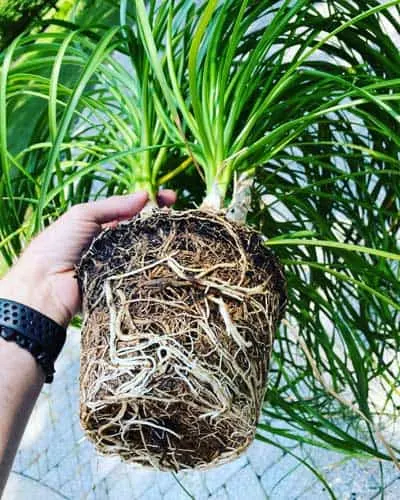
But that doesn’t really answer your question – I know.
Ultimately, do what works for you. Now you know what considerations to make, so you can make an informed choice for your situation.
With my own plants, I’m all over the map. Running a business and taking care of a family takes up a lot of my time, so while I like to re-pot plants within a month of bringing them home, sometimes I wait because I just don’t have time.
During that time I make sure the plants are in great light, and I make sure to adjust my care and watering to their needs.
Sometimes I wait to re-pot specifically because I haven’t had a certain variety of plant before, like my Geogananthus ciliatus. I wanted to learn a bit about it before I disrupted its root system.
Sometimes I re-pot before a plant even comes in the door because there were fungus gnats flying into my mouth on the car ride home 🙂
And sometimes I put a plant on a shelf and throw water at it for several years, then do a massive re-potting. I feel bad about those ones, but hey – we’re all human. No judgment allowed here – only growth 🙂
Mixing a soil to suit your plant can be daunting – we’ve done it for you!
*** Please note that this discount does not apply to 5+ quart bags (substrates or soils) as these are already 30% off.

